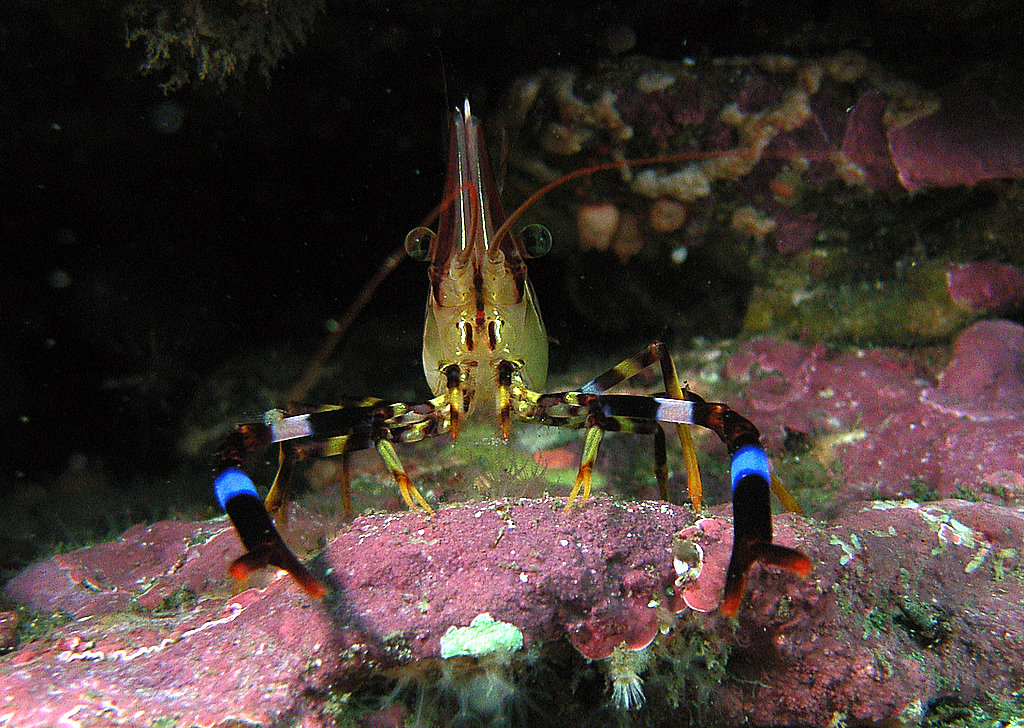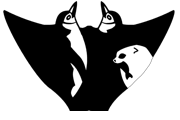Neben eigenen Projekten unterstützt der ART auch auf vielfältige Weise externe Untersuchungen, mit Schwerpunkt auf Langzeit-Monitoring-Projekten. Im Folgenden einige Beispiele:
- Untersuchungen zu den saisonalen Wanderungen und Immigration von Falkland-Karakaras auf der Isla de los Estados, Argentinien, mittels GPS-Satellitensendern (seit 2017; Ulises Balza, CONICET – CADIC).
- Bekämpfung eingeschleppter Pflanzen auf den Falklandinseln (seit 2015; Island LandCare, Stanley, Falklandinseln).
- Monitoring-Programm zur Vogelfauna im Bereich von Stanley Harbour und Cape Pembroke (seit 2013; Island LandCare, Stanley, Falklandinseln).
- Bestandsaufnahme von Flora und Fauna auf Tussock-Inseln der Falklands (seit 2008; Island LandCare, Stanley, Falklandinseln).
- Monitoring-Programm zur Ökologie und Biologie von Seevögeln und Meeressäugern im Beagle-Kanal und auf Isla de los Estados, Argentinien (seit 2007; Dr. Andrea Raya Rey & Dr. Sabrina Harris, CONICET – CADIC, Ushuaia, Argentinien).
- Untersuchungen zur Verteilung juveniler Gelbaugenpinguine (2018; Melanie Young, University of Otago, Neuseeland)
- Monitoring-Programm zur Bestandsentwicklung und Gefährdung von Wanderalbatrossen durch Tourismus auf Albatross und Prion Island, Südgeorgien (2007-2019; South Georgia Surveys, Stanley, Falklandinseln).
- Untersuchungen zum Zugverhalten von Spiegelgänsen in Patagonien, Südamerika (2013-2018; Dr. Julieta Pedrana, CONICET – INTA, Balcarce, Argentinien).
- Ausrottung von eingeschleppten Tierarten (z.B. Ratten, Mäuse) auf ausgewählten Inseln der Falklands (2007-2018; Island LandCare, Stanley, Falklandinseln).
- Wanderverhalten von juvenilen Schwarzbrauen- und Wanderalbatrossen von Südgeorgien (2009; Dr. Richard Phillips, British Antarctic Survey, UK).
- Genetische Untersuchungen an eingeschleppten Nagetieren auf den Falklandinseln (2007-2010; Island LandCare, Stanley, Falklandinseln).
- Tauchuntersuchungen zur Verbreitung und Zusammensetzung wirbelloser Tiere im Flachwasserbereich der Falklands (2007) inkl. Erstellung eines fotografischen Bestimmungsschlüssels (erschienen 2013).
- Untersuchungen zur Sozialstruktur von Grindwalen bei einer auf den Falklands gestrandeten Walschule (2005-06).

Einige ausgewählte Publikationen aus diesen Projekten:
- Balza, U. R. Brasso, N.A. Lois, K. Pütz & A. Raya Rey (2021) The highest mercury concentrations ever reported in a South American bird, the Striated Caracara (Phalcoboenus australis). Polar Biology 44: 2189–2193
- Balza, U., N.A. Lois, M.J. Polito, K. Pütz, A. Salom & A. Raya Rey (2020) The dynamic trophic niche of a terrestrial predator and its relation to marine pulsed resources. Ecology and Evolution 10: 12264–12276
- Young, M.J., P.J. Seddon, K. Pütz, P. Agnew, T. Mattern, R.P. Hickcox, B.C. Robertson & Y. van Heezik (2022) Conservation implications for post-fledging dispersal of yellow-eyed penguins/hoiho. Marine Ecology Progress Series 695: 173-188
- Pedrana, J, A. Gorosábel, L. Kazimierski, K. Pütz, L. Bernad & K. Lanari (2022) Weather conditions affect spring migration departure of Ruddy-headed Goose in the southern Pampas, Argentina. EMU 122(2): 144-149
- Pedrana, J., K. Pütz, L. Bernad, S. Muñoz, A. Gorosábel, G. Castresana, A. Leiss & J.P. Seco Pon (2020) Spatial and temporal variation in the migration of Ruddy-headed Goose in southern South America using satellite tagging. Bird Conservation International 30(4): 634-648.
- Pedrana, P., Pütz, L. Bernad, J.P. Seco Pon, A. Gorosabel, S.D. Muñoz, J.P. Isacch, R. Matus, O. Blank, B. Lüthi, M. Lunardelli & P. Rojas (2018) Migration routes and stopover sites of Upland Geese Chloephaga picta in Southern South America. Avian Biology Research 11: 80-88
- Pedrana, J, JP Seco Pon, JP Isacch, A Leiss, PO Rojas, G Castresana, J Calvo, L Bernad, SD Muñoz, NO Maceira & K Pütz (2015) First insights into the migration pattern of an upland goose based on satellite tracking. Ornitologia Neotropical 26: 245–253.
- Hingston, M., Poncet, K. Passfield, M.A. Tabak, S.I. Gabriel, S.B. Piertney & J.C. Russell (2016) Phylogeography of Rattus norvegicus in the South Atlantic Ocean. Diversity: 8(4): 32
- Poncet, S., A.C. Wolfaardt, A. Black, S. Browning, K. Lawton, J. Lee, K. Passfield, G. Strange & R.A. Phillips (2017) Recent trends in numbers of wandering (Diomedea exulans), black-browed (Thalassarche melanophris) and grey-headed ( chrysostoma) albatrosses breeding at South Georgia. Polar Biology 40: 1347-1358
- Poncet, S., K. Passfield, A. Kuepfer & M.A. Tabak (2019) The effect of Norway rats on coastal waterbirds of the Falkland Islands: a preliminary analysis. In: C.R. Veitch, M.N. Clout, A.R. Martin, J.C. Russell & C.J. West (eds.) Island invasives: scaling up to meet the challenge, pp. 147–153. Occasional Paper SSC no. 62. Gland, Switzerland: IUCN.
- Tabak, M.A., O.R.J. Anderson, G. Robb, Poncet, K. Passfield, M.G. Martinez & C. Martinez del Rio (2016) Comparative isotopic natural history of two native passerines (Troglodytes cobbi and Cinclodes antarcticus) and the invasive rats (Rattus norvegicus) that extirpate them. Austral Ecology DOI:10.1111/aec.12351
- Tabak, MA, ORJ Aanderson, G Robb, S Poncet, K Passfield, M Gaste Martinez & C Martinez del Rio (2016) Comparative isotopic natural history of two native passerines (Troglodytes cobbi and Cinclodes antarcticus) and the invasive rats (Rattus norvegicus) that extirpate them. Austral Ecology. doi:10.1111/aec.12351
- Tabak, M.A., Poncet, K. Passfield, J. R. Goheen & C. Martinez del Rio (2016) The ghost of invasives past: rat eradication and the community composition and energy flow of island bird communities. Ecosphere 7(8):e01442.10.1002/ecs2.1442.
- Tabak, M. A., Poncet, K. Passfield, M.D. Carling & C. Martinez del Rio (2015). The relationship between distance and genetic similarity among invasive rat populations in the Falkland Islands. Conservation Genetics 16:125–135. DOI 10.1007/s10592-014-0646-4
- Tabak, M. A., Poncet, K. Passfield & C. Martinez del Rio (2015). Modeling the distribution of Norway rats (Rattus norvegicus) on offshore islands in the Falkland Islands. NeoBiota 24: 33–48. DOI: 10.3897/neobiota.24.8433
- Jones HP, ND Holmes, SHM Butchart, BR Tershy, PJ Kappes, I Corkery, A Aguirre-Muñoz, DP Armstrong, E Bonnaud, AA Burbidge, K Campbell, F Courchamp, PE Cowan, RJ Cuthbert, S Ebbert, P Genovesi, GR Howald, BS Keitt, SW Kress, CM Miskelly, S Oppel, S Poncet, MJ Rauzon, G Rocamora, JC Russell, A Samaniego-Herrera, PJ Seddon, DR Spatz, DR Towns & DA Croll (2015) Invasive mammal eradication on islands results in substantial conservation gains. Proceedings of the National Academy of Sciences of the Unites States of America. 1073/pnas.1521179113
- Tabak, M.A., Poncet, K. Passfield, J.R. Goheen & C. Martinez del Rio (2014) Rat eradication and the resistance and resilience of passerine bird assemblages in the Falkland Islands. Journal of Animal Ecology 10/2014; DOI: 10.1111/1365-2656.12312
- Tabak MA, Poncet, K. Passfield & C. Martinez del Rio (2014) Invasive species and land bird diversity on remote South Atlantic Islands. Biological Invasions 16, 341-352.
- Poncet, L. Poncet, D. Poncet, D. Christie, C. Dockrill, and D. Brown (2011) Introduced mammal eradications in the Falkland Islands and South Georgia. In C.R. Veitch, M.N. Clout & D.R. Towns (eds.) Island invasives: eradication and management. IUCN, Gland, Switzerland.
- St Clair, J.J.H., S. Poncet, D.K. Sheehan, T. Székely & G.M. Hilton (2011) Responses of an island endemic invertebrate to rodent invasion and eradication. Animal Conservation 14(1): 66–73

